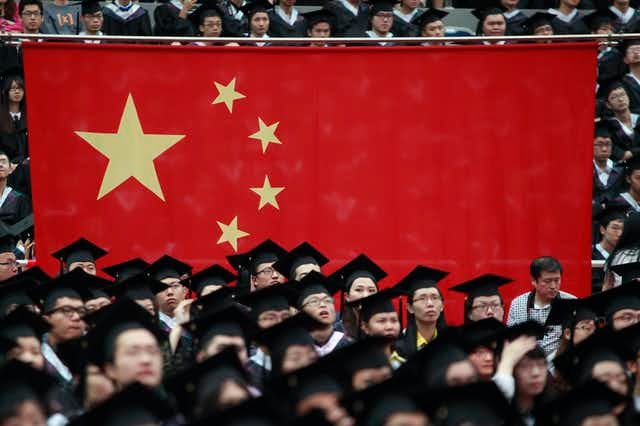Primary Education
In China, primary school education is compulsory and it lasts 6 years. Children start schools at age six (seven in some areas). The language of instruction is Mandarin Chinese with the exception of the primary schools that mainly admit ethnic minority students. A typical school year is comprised of two semesters and runs from the month of September to July. Students attend classes five days a week and primary school education currently includes nine compulsory courses, which include Chinese, Mathematics, Social Studies, Nature, Physical Education, Ideology and Morality, Music, Fine Art, and Labor Studies. Foreign Language is normally offered as an elective course. In order to graduate, all students are required to pass graduation examinations in the subjects of Chinese and Mathematics. The examinations are normally designed and administered by schools with guidance from local educational authorities. Students move on to 3-year junior (lower) secondary schools (chuzhong 初中) after graduating from primary schools.
Middle Education
Junior (lower) secondary education lasts three years following the completion of primary school. In order for students to obtain a certificate of graduation, students are required to pass graduation examinations and meet minimum physical education standards. The graduation examinations are designed and administered by individual schools according to guidelines set by the provincial educational bureaus or by local educational authorities. Students are typically examined in the following subjects for graduation: Chinese, Mathematics, Chemistry, Physics, Foreign Language, and Politics. Completion of junior (lower) secondary education also marks the end of a 9-year (6+3) compulsory education program.

Secondary Education
After the completion of junior (lower) secondary school, students can choose to enter either general (academic) senior secondary school or vocational senior secondary school. General (academic) senior secondary school lasts 3 years and vocational senior secondary school lasts 3 or 4 years. Senior secondary school is known as (gaozhong 高中) and vocational senior secondary school is known as (zhongzhuan 中专) in China. Students wishing to continue their study in the general (academic) track must pass the entrance examinations for general senior secondary schools, which is also known as (zhongkao 中考) in China. Designed and administered by provincial educational authorities, the entrance examination includes the same subjects as the junior secondary graduation examination. At the end of their final school year, graduates of senior secondary schools seeking admission to post-secondary education are required to take the National Higher Education Entrance Examination, also called National College Entrance Examination (NCEE), commonly known as (gaokao 高考) in China.
Vocational Education
Vocational education programs are offered at both the secondary and post-secondary levels. Vocational senior secondary schools provide subject and occupation specific education and training. Vocational senior secondary education is highly employment oriented and graduates normally enter the workforce. However, it does offer some access to further education, particularly in the technical/vocational specialties. Since the year 2000, the Ministry of Education (MOE) has allowed graduates of vocational secondary schools to take the NCEE and be admitted into higher education programs.
Higher technical/vocational education is available at the zhuanke (专科) level, which require two or three years of full-time post-secondary study. It is possible for graduates of higher vocational education programs at the zhuanke level to obtain a "benke 本科" degree (Bachelor’s degree) certificate through an upgrading program, but in a limited number of fields. Vocational higher education institutions are currently administered at the provincial level.
Tertiary Education
Higher education is provided by institutions of various types including general and technical universities, specialized institutions, professional universities, military institutions, medical schools and colleges, independent colleges, and adult higher education institutions of various types. Entry to university depends primarily on how well the students perform in the entrance examinations. Students with outstanding academic performance in their secondary schools can also possibly be granted an exemption from the entrance examination and be recommended directly to the university of their choice through a method called (baosong 保送). In addition, some private institutions are exempted from the NCEE (gaokao) and accept all students who can afford the tuition fees. Prestigious universities (key institutions) maintain higher admission standards, and therefore require higher NCEE (gaokao) scores than other institutions. Entry to higher education in China is highly competitive.